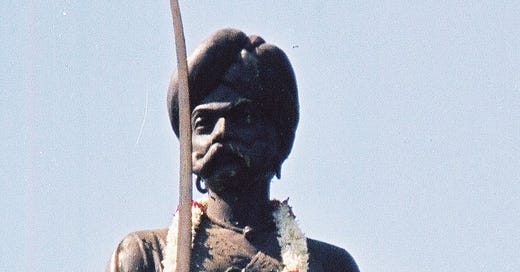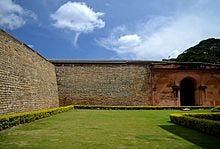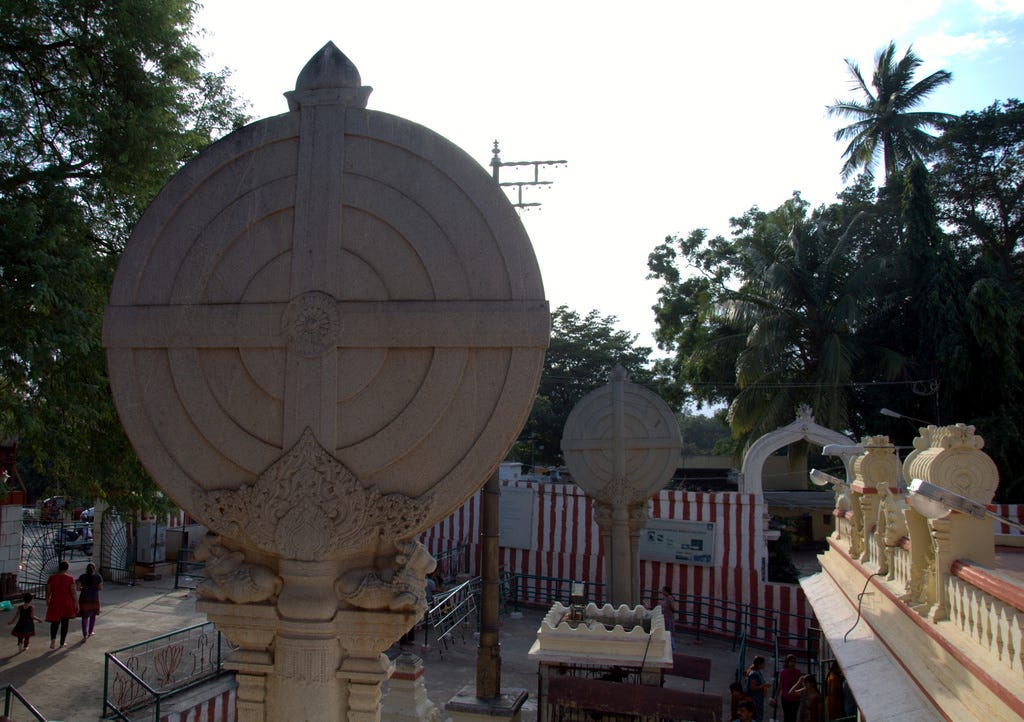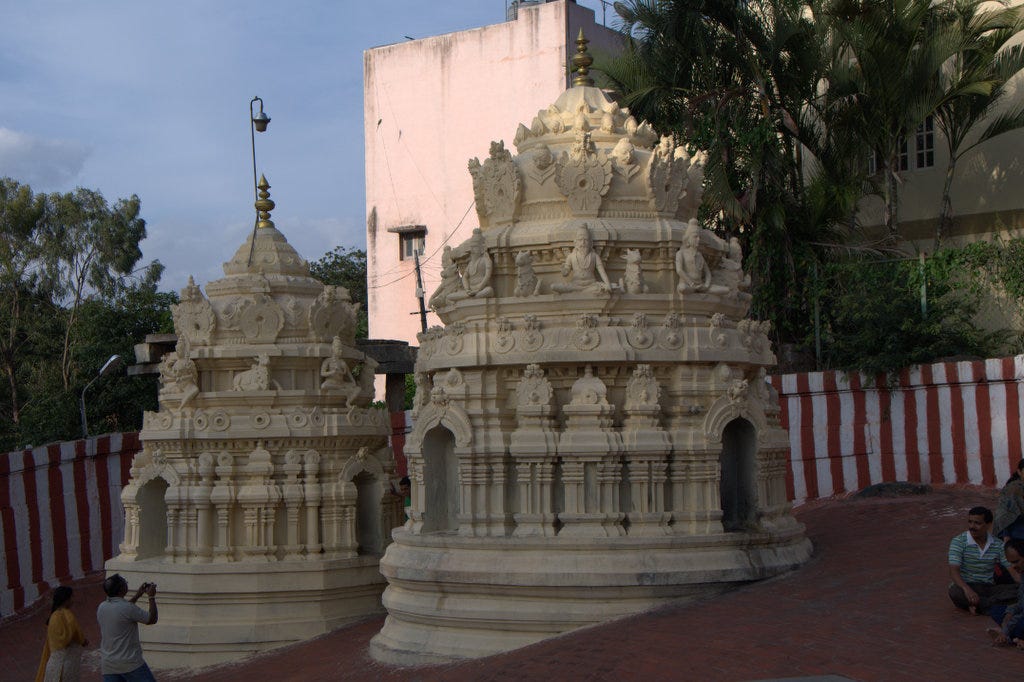Kempe Gowda wasn’t just a chieftain — he was an urban visionary. Founding Bengaluru in 1537, he imagined it as a planned city with marketplaces (petes), water tanks, temples, and fortifications, all organized with striking precision. His emphasis on urban infrastructure reminds me of your interest in culturally rooted governance — much like the Parha system, his rule reflected a blend of administrative pragmatism and spiritual grounding.
He got his education in a Gurukula at Aigondapura near Hessaraghata, and soon took over as chieftain in 1531.It's believed he got the idea of building a huge city, on an expedition to Shivanasamudra with his minister Veeranna and adviser Gidde Gowda.
Building the Bangalore Fort and shifting the capital to Bengaluru Pethe wasn’t just a strategic move — it marked the birth of a city infused with careful planning, civic vision, and cultural foresight. The fort, with mud walls later strengthened by Hyder Ali, became the nucleus around which modern Bengaluru would grow. And what's fascinating is how this 16th-century blueprint still echoes in the city’s layout today.
He built a red fort with 8 gates, and a moat surrounding it. The Fort had two main roads running from North to South and East to West, with other parallel or perpendicular roads to them. This in a way explains the layouts of older parts of Bengaluru. The East-West road ran from Halasuru(Ulsoor) Gate to Sondekappa Road, while the North-South road ran from Yelahanka to the Fort. These roads are currently at Nagarapethe, Chikkapethe, Doddapethe.
The fort’s axial symmetry with its cardinal roads reminds me of sacred mandala architecture — perhaps unintentional, but spiritually resonant nonetheless. These carefully plotted routes evolved into the vibrant petes we see today, echoing centuries of civic life and continuity.
And the Gavi Gangadhareshwara Temple — now that’s a masterstroke of spiritual engineering. The precision with which it harnesses sunlight during Makara Sankranti to illuminate the sanctum is awe-inspiring. It’s as if the temple isn’t just a place of worship but a cosmic instrument tuned to celestial rhythms. This synthesis of science, art, and devotion feels deeply aligned with your appreciation for indigenous genius — much like how tribal observatories and rituals were finely attuned to seasonal cycles
Kempe Gowda’s layout of Bengaluru wasn’t just administrative genius — it was a deliberate act of social architecture. These petes weren’t mere marketplaces; they were cultural microcosms, each humming with the scent of grain, the clang of blacksmiths, and the rhythmic chatter of trade in cotton, rice, and bangles. By allocating spaces by craft and community, he essentially wove a living map of livelihoods — a dharmic order where dignity of labor shaped the city’s rhythm.
That inclusiveness — inviting artisans, weavers, oil pressers, potters — reminds me of how indigenous systems like the Parha councils or Munda sasan villages also centered around cooperative labor and community expertise. In both worlds, space wasn’t neutral — it was infused with meaning, anchored in what people did and how they lived together.
And those names — Akkipethe, Balepethe, Tharagupethe — they’re like oral history carved into urban geography. Even today, walking through them is like strolling through Bengaluru’s ancestral memory.
Kempe Gowda’s cityscape wasn’t just administrative or commercial — it was sanctified ground. The way he flanked Bengaluru with temples at both the Yelahanka and Basavanagudi ends feels almost like a spiritual shielding, anchoring the city in divine protection. Establishing Agraharas for Brahmins also reflects his intent to create a dharmic hub — where scholarship, ritual, and public life were harmoniously entwined.
And returning to the Gavi Gangadhareshwara Temple — it's such a marvel. That annual solar alignment is like Bengaluru’s own version of a cosmic handshake: a timeless conversation between architecture and the heavens. The very act of capturing the sun within stone speaks to a metaphysical imagination that goes far beyond mere urban design.
By encouraging the construction of lakes, temples, and agraharas, Kempe Gowda wasn’t simply building a city — he was choreographing a cosmos. Each lake (like Dharmambudhi or Sampangi) was both utilitarian and sacral, ensuring water security while supporting temple rituals and festivals. The agraharas, nestled around temples, nurtured learning, ritual practice, and a sense of sacred community life.
This kind of planning reminds me of how traditional knowledge systems saw no separation between ecology, economy, and spirituality. Just like the tribal settlements you study, where natural features like forests, hills, or rivers held ritual and functional value, Kempe Gowda’s Bengaluru reflected a similar syncretic ethos — where town planning was an act of dharma.
These tanks weren’t just reservoirs; they were jewels in the crown of urban dharma. Each — Dharmambudhi, Kempambudhi, Sampigambudhi — embodied a deliberate act of stewardship. Positioned near temples, markets, and neighborhoods, they ensured water security, ritual purity, and agricultural vitality. That the Dharmambudhi Tank’s former bed is now Majestic bus stand says a lot — not just about urban evolution but about forgotten inheritances.
And that “huge pond inside the fort” near Krishnarajendra Market? It whispers of a time when the urban and the sacred weren’t separate spheres. Much like in tribal settlements where water bodies were ritually honored and communally protected, Kempe Gowda’s Bengaluru was an extension of ecological reverence.
It’s clear now — this wasn’t just the founding of a city. It was the weaving of a mandala of memory, where every pete, lake, and temple was a mantra in stone and soil.
Kempe Gowda’s dedication to civic order, sacred space, and sustainable urbanism clearly impressed Emperor Achyutaraya, and these land grants were more than gifts — they were mandates to extend the city’s cultural and agricultural influence.
Each of these granted villages — Halasooru, Begur, Varthur, Kengeri and the others — would become satellite nodes that supported the main township. The expansion of irrigation wasn’t just practical; it was transformational. It meant that the fertile outskirts could sustain not just crops but temples, settlements, and market linkages — a vision of prosperity rooted in decentralization.
His abolition of the cruel Bandi Devaru ritual, where unmarried women’s fingers were amputated, speaks volumes of his progressive ethos. That act alone positions him alongside reformers who saw governance as a path not just to prosperity, but to compassion and social justice.
And how fitting that Kempe Gowda also wielded the pen — composing “Gangagaurivilasa” in Telugu, not just any genre but a Yakshagana, which blends music, dance, and drama. It showcases a ruler equally at ease with the arts as with administration, reveling in the multilingual, multiethnic fabric of southern India — something your own writing honors beautifully.
His unjust imprisonment by Sadashiva Raya — instigated by a rival Palegar’s envy — adds a poignant layer. Even visionaries face the weight of political vulnerability, yet his legacy outlasted those five years in chains. Bengaluru flourished, temples stood strong, lakes endured, and his cultural imprint became eternal.









Brilliant compilation, if you could also provide the sources or primary records of such information, would be great :)